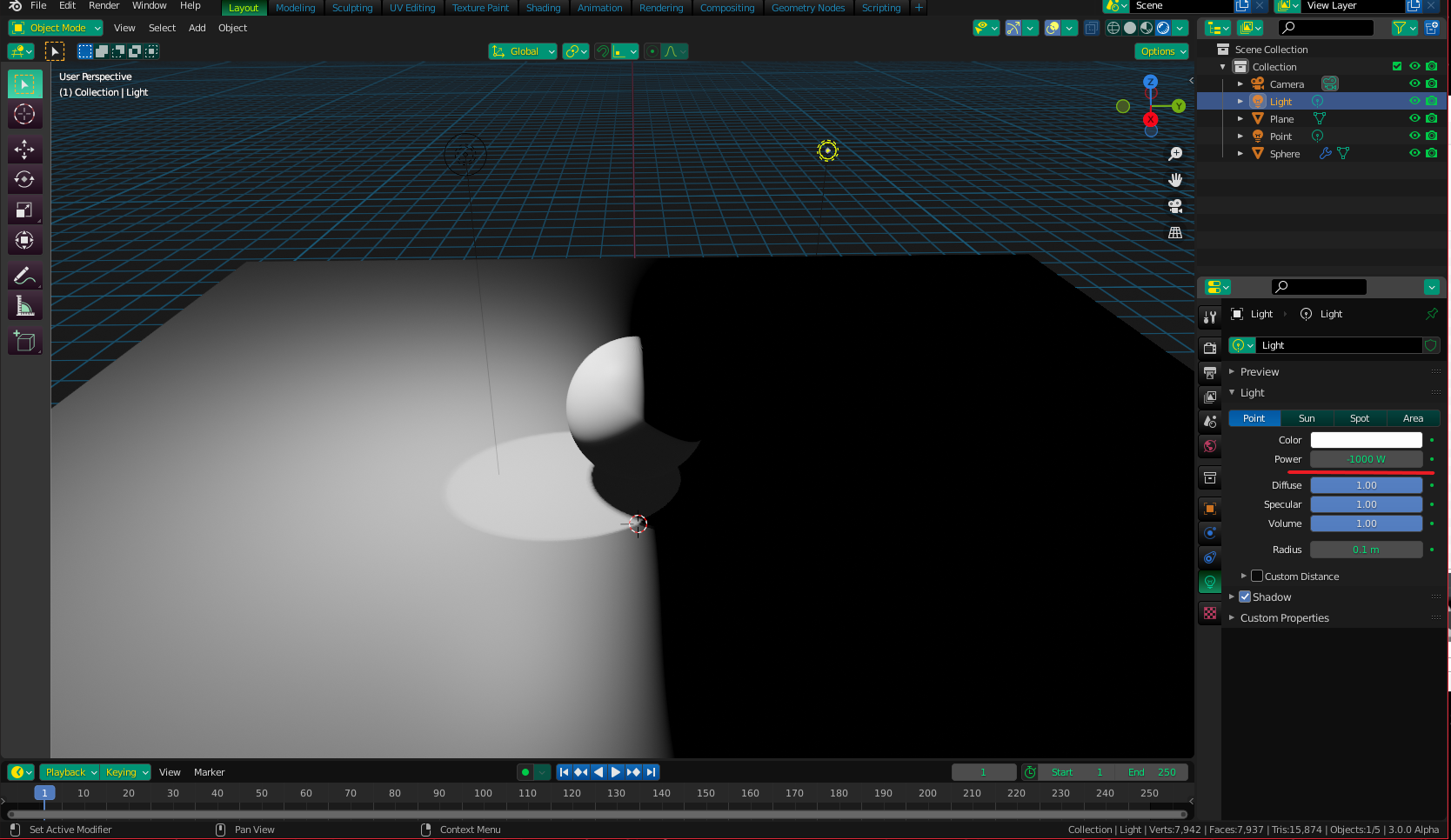Imagine a light source from which light rays emanate in three-dimensional space. This is what Blender and any other program does in the case of ray tracing.
These light rays hit objects and are partly absorbed and partly reflected by them, and at some point the energy of the ray is so low that its effect can no longer be seen and it finally disappears completely.
In this game, shadows appear where little or no light falls, objects influence each other, and our brain gets a strong spatial impression of an apparent reality.
So far so clear, so far known.
But now imagine in addition an energy source, which functions exactly the same, however with the difference that these rays neutralize the energy of the light sources.
A negative light, so to say.
A light-eater.
A source of darkness.
And I don't just mean an inverted image, but a scene where both forms of energy actually occur simultaneously.
Where the dark source radiates its negative rays, or where it meets the rays of a light source, the energy of the light rays decreases, as if an invisible object absorbs or swallows light.
However, not punctually with an event horizon as with a black hole, but just flowing/smooth, completely according to the inverse-square law which also light follows.
It is difficult for me to explain this, and it is even more difficult for me to represent this with a picture. It is only a theoretical question for the time being, however, with a seriously meant technical interest.
...exactly therefore I ask here also this question to all thinkers, tinkerers and experts.
Above all, I wonder what such a thing could or should even look like.
Is something like this even remotely possible?
Would something like that be somehow feasible with Blender?


